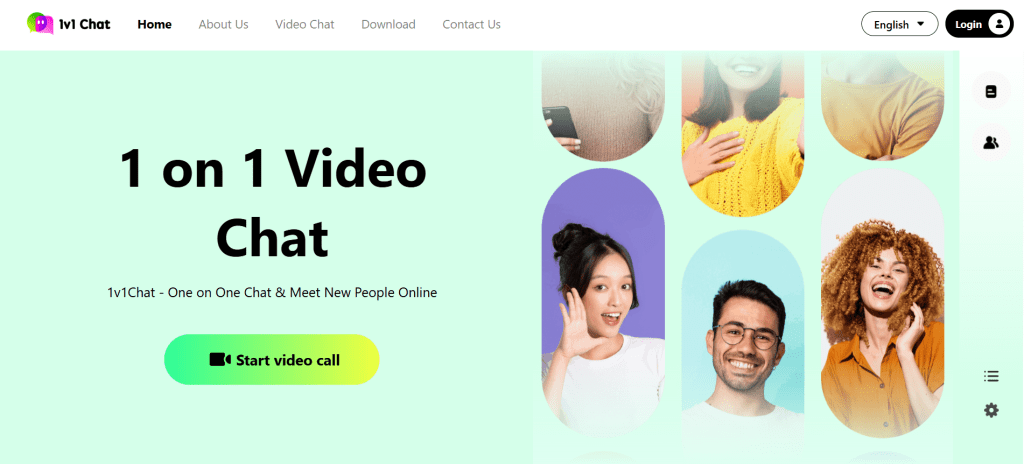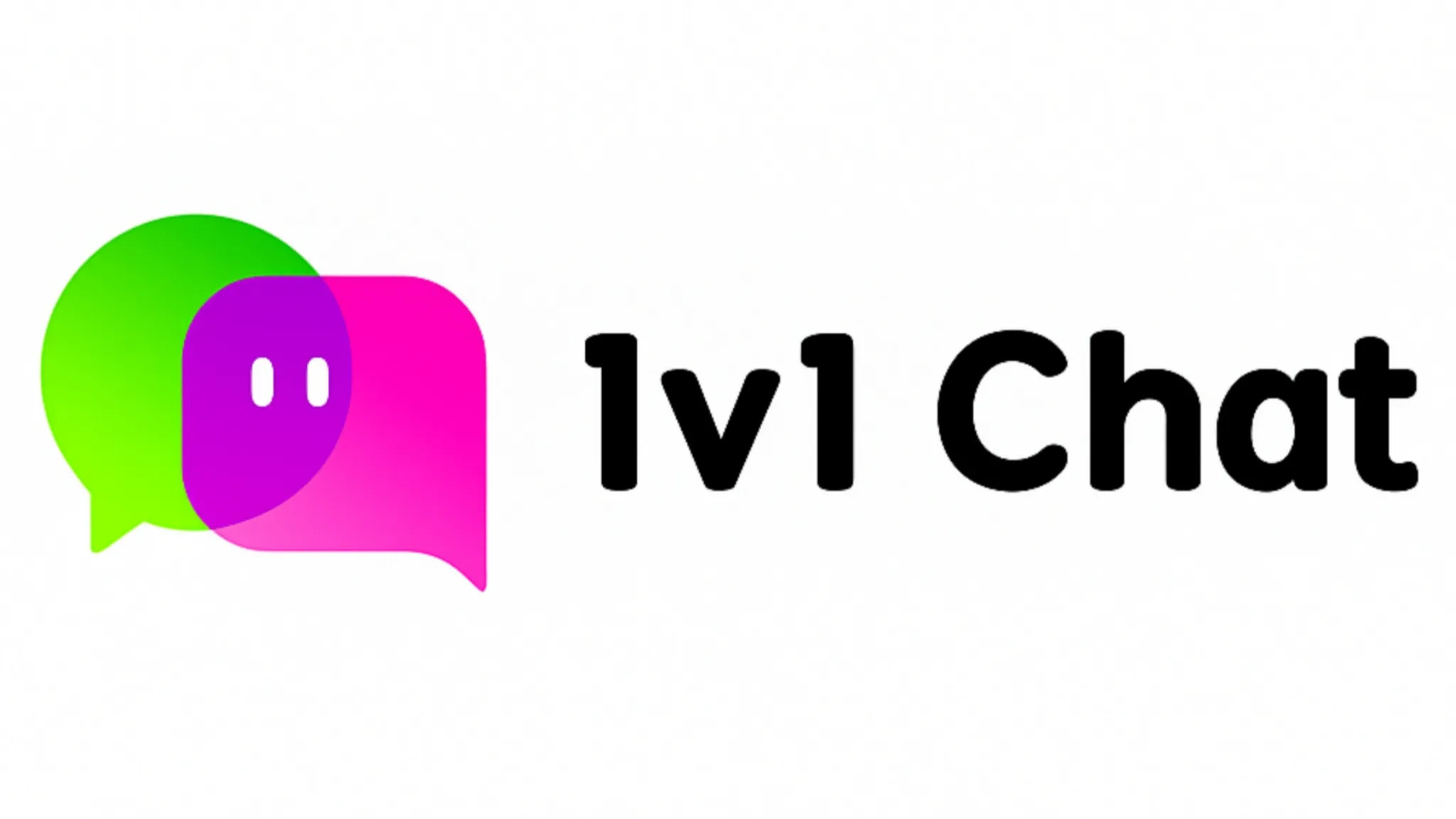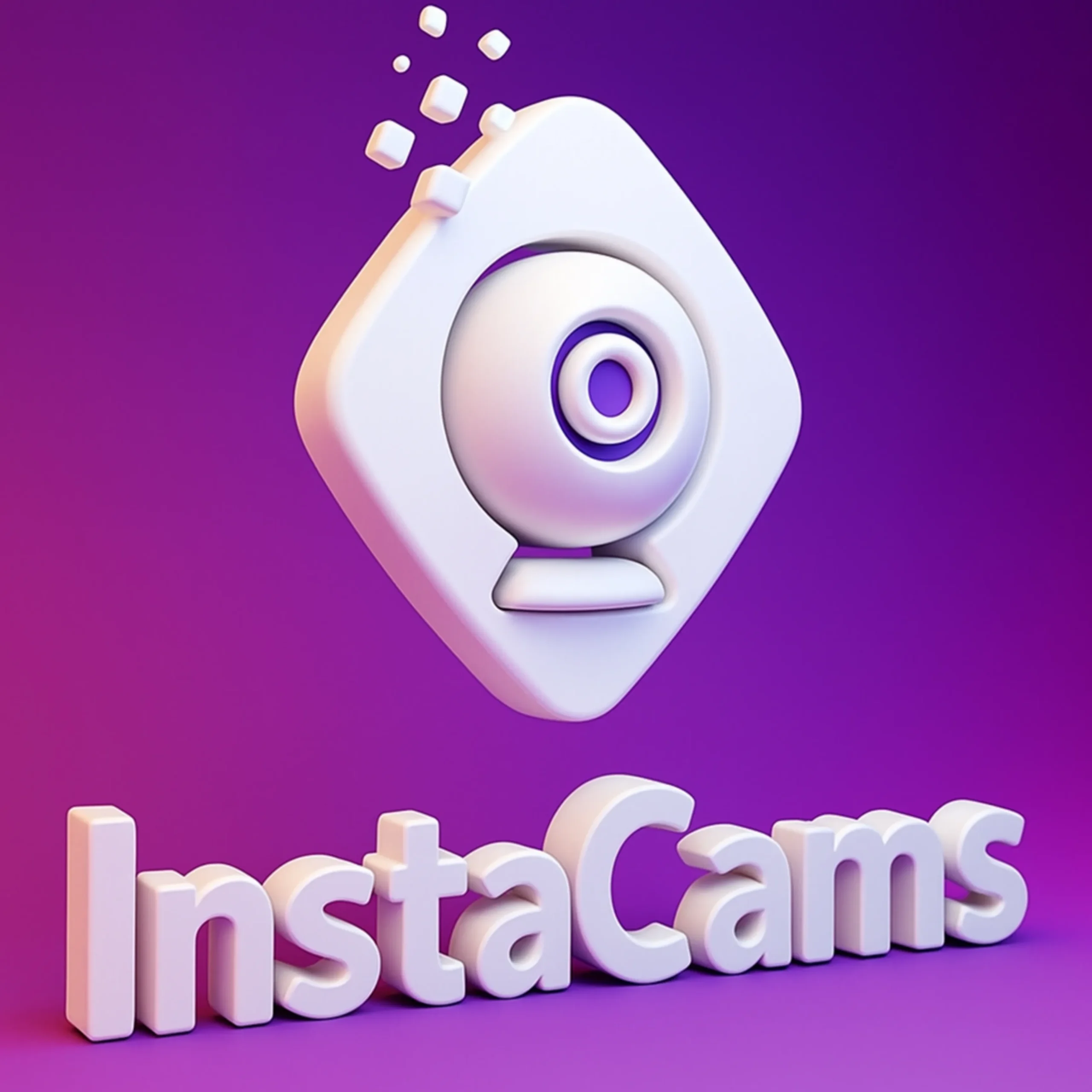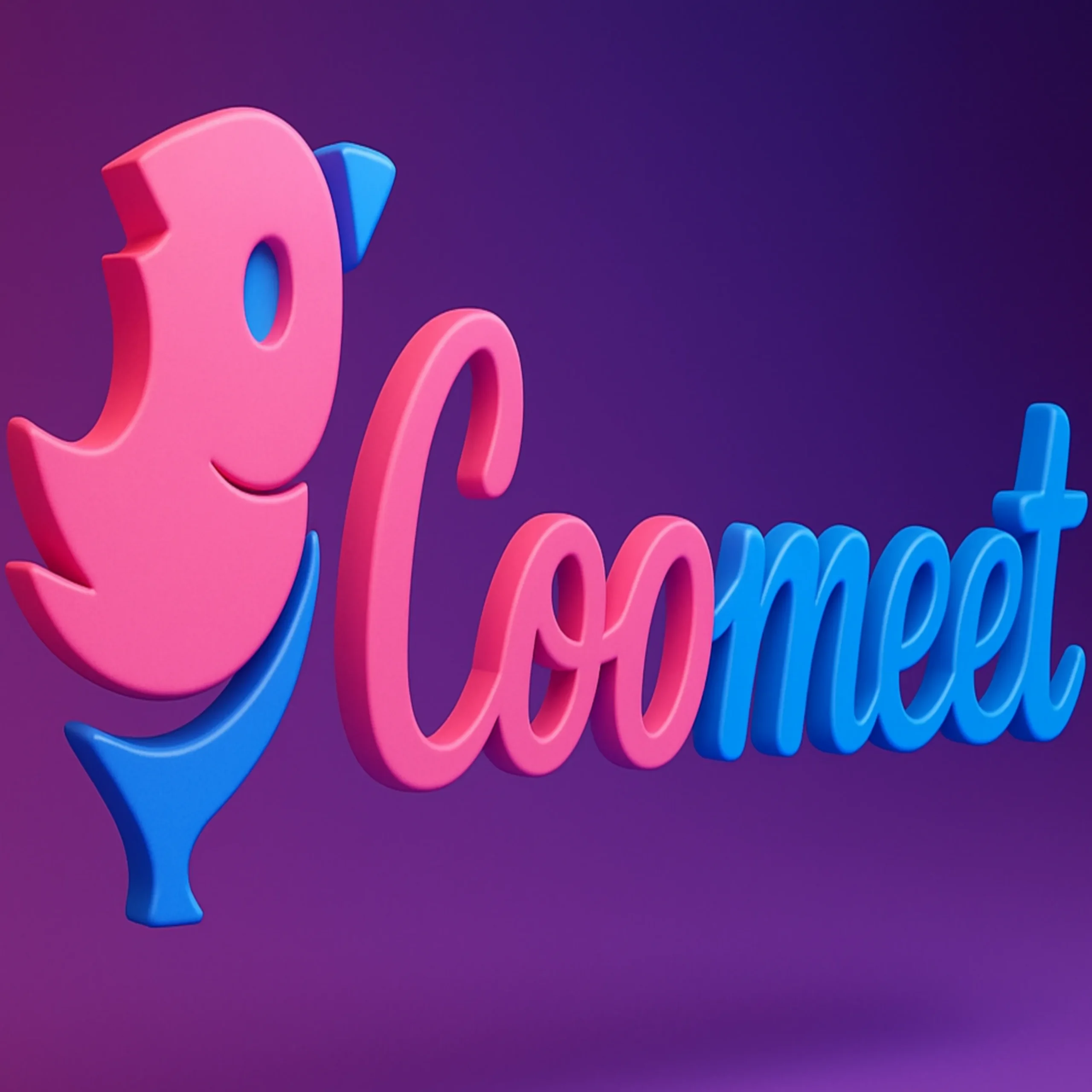1v1 video chat has rapidly become one of the most powerful ways to communicate online, blending the intimacy of face-to-face conversation with the immediacy of real-time connection. Instead of juggling group calls, long text threads, or emotionless messages, 1v1 video chat brings two people into a private, uninterrupted space where communication feels natural, direct, and human.
Popular Alternatives:
It’s the digital version of pulling someone aside for a focused conversation — no noise, no distractions, just clarity and connection. As more people crave genuine interaction in the middle of an overcrowded social landscape, 1v1 video chat stands out as the simplest way to build trust, create meaningful moments, and talk openly without competing for attention.
Overview: 1v1 Video Chat

At its core, 1v1 video chat is designed to recreate the quality of in-person communication through a streamlined, real-time digital experience. Instead of large conference rooms, chaotic group calls, or anonymous text-based chats, 1v1 video chat connects two individuals in a private virtual environment where every expression, gesture, and reaction matters. The model is built around simplicity: two people, one screen, and a direct communication channel optimized for clarity and comfort.
The technology powering 1v1 video chat focuses on stability, low latency, and high-definition streaming so conversations feel smooth rather than robotic. Modern platforms now include adaptive video quality, background noise reduction, and real-time audio correction — all working behind the scenes to ensure the call remains natural even with imperfect connections. Platforms often include customization features such as interest filters, virtual backgrounds, chat-to-video switching, screen sharing, and device-agnostic access, giving users complete control over how they engage.
What makes 1v1 video chat especially effective is its versatility. It’s used socially for meeting new people, romantically for online dating, professionally for interviews or consultations, and academically for tutoring or mentorship. Because it removes the audience factor, conversations feel safer, more authentic, and more focused. This single-connection format has become the foundation of many modern communication apps — from random-chat platforms to private business tools — proving that the most meaningful digital experiences often happen when it’s just two people talking face-to-face.
Features of 1v1 Video Chat
1v1 video chat stands out because it strips away the noise of large group calls and focuses on delivering a clean, powerful, human-to-human communication experience. The technology behind it has evolved rapidly, and modern platforms now pack in features that elevate each conversation from a simple call into a high-quality digital interaction.
Below is a detailed breakdown of the core features your readers expect in a full, authoritative review.
Instant, Direct Connection
The heart of 1v1 video chat is immediacy. There’s no waiting room, no complicated scheduling, and no juggling multiple participants. You’re connected directly with one person in a private virtual space. This format encourages honesty, clarity, and genuine conversation — the exact opposite of crowded, chaotic online communication.
It replicates the intimacy of a face-to-face talk while preserving the convenience of being anywhere in the world. Whether it’s a personal conversation, a coaching session, a support call, or meeting someone new, the instant connection is the biggest appeal.
High-Definition Video Quality
Modern 1v1 chat platforms prioritize crystal-clear video. Most adjust resolution dynamically depending on your network speed, so even with average internet, calls stay sharp and fluid. High-definition streaming amplifies facial expressions, eye contact, and subtle cues — all the things that make conversations feel real instead of robotic.
HD quality is now a standard expectation for platforms in this niche, and it’s a key ingredient in making interactions more personal and impactful.
Real-Time Audio Clarity
Audio is the backbone of any video chat. With 1v1 platforms, you get:
- echo cancellation
- noise suppression
- voice enhancement
- real-time audio stabilization
These features keep the conversation smooth even in noisy environments. When only two people are talking, clean audio becomes a must — and the technology delivers consistency across devices.
Adaptive Bandwidth Technology
A major strength of modern 1v1 video chat is that it automatically adjusts to your connection. If your Wi-Fi drops for a second or your mobile data fluctuates, the tech reduces video load and preserves call stability. That means fewer frozen frames, fewer dropped calls, and a smoother experience overall.
Adaptive bandwidth technology ensures the conversation keeps flowing, even when the internet doesn’t cooperate.
Cross-Device Compatibility
Users can join a 1v1 video chat from almost any device:
- smartphones
- tablets
- laptops
- desktop computers
Most platforms are browser-based, requiring no downloads. This flexibility makes 1v1 video chat accessible to anyone — whether they’re using iPhone, Android, Mac, Windows, or even a tablet on the go.
Integrated Text Messaging
Text chat built into the video window makes communication even more fluid. Users can:
- share quick links
- send short notes
- drop usernames or contact details
- clarify something during a call
This dual-mode communication keeps conversations from breaking when typing is faster or more convenient.
Screen Sharing Capabilities
For professional, academic, or support-focused calls, screen sharing is essential. 1v1 video chat platforms allow users to:
- present documents
- explain steps visually
- walk someone through a process
- collaborate in real time
Screen sharing turns the 1v1 environment into a teaching, coaching, or demonstration tool.
Privacy-Focused Features
Because only two people are present, 1v1 video chat can be built around strong privacy controls:
- end-to-end encryption
- permission-based access
- anonymous joining
- limited data storage
- quick mute & camera toggle
- one-tap blocking and reporting
These features protect users while keeping the chat environment safe and controlled.
Interest-Based Filtering
Some 1v1 video chat platforms — especially those designed for meeting new people — offer matching filters such as:
- shared interests
- age ranges
- location
- languages
These filters increase the relevance of each match and create more meaningful conversations, especially on discovery-based platforms.
Virtual Backgrounds & Aesthetic Controls
Visual customization options help users feel comfortable and confident. With virtual backgrounds, blur effects, and lighting adjustments, people can control their environment even when their surroundings aren’t perfect.
This is especially powerful for users who want privacy or want to present themselves professionally.
Low Friction, High Engagement Design
The best 1v1 video chat platforms focus on reducing the number of clicks needed to start or maintain a conversation. Smooth UI, clean layouts, and intuitive controls all contribute to a friction-free experience.
The design philosophy is simple:
Less setup. More talking. Better connection.
Built-in Safety Tools
To maintain a safe environment, 1v1 video chat platforms often include:
- real-time moderation
- instant reporting tools
- AI-based inappropriate content detection
- auto-warnings or bans
- user reputation systems
These systems maintain respectful communication without interrupting the flow of the chat.
Optional Anonymity
Some users prefer privacy — especially on random chat-style platforms. Many 1v1 video chat services allow:
- no registration
- no real name
- no profile photo
- no contact details
This keeps the experience simple and protects users’ identities when needed.
Multi-Language Support
With global communication becoming normal, multi-language interfaces and live translation tools make cross-border conversations easier. This broadens the audience and lets users feel comfortable regardless of their native language.
Pricing for 1v1 Video Chat Platforms
Pricing for 1v1 video chat platforms varies widely depending on the purpose, features, and user audience of each service. Some tools are built for casual social chatting, while others cater to professionals and remote workers who need premium performance. Here’s a breakdown of the typical pricing structures you’ll encounter across leading 1v1 video chat platforms.
Free Access (Casual Social Platforms)
Most social-focused 1v1 video chat platforms offer completely free access. These include random-chat platforms, one-on-one connection apps, and browser-based video chat tools designed for quick interactions. Users can instantly join video chats without paying or creating accounts, which makes them appealing for fast and spontaneous conversations.
Free platforms may include:
- Unlimited random pairings
- Basic camera and microphone usage
- Simple text chat features
- Optional filters or region selections
- Skip or “Next” functions
While these platforms are free, they often fund themselves through:
- Light advertising
- Optional premium upgrades
- In-app purchases
Freemium Platforms (Social + Utility Blend)
Some platforms use a freemium model where the core 1v1 video chat is free, but optional upgrades unlock better features. These upgrades may include:
- Country filters
- Gender filters
- Higher-resolution video
- Faster matching
- Private rooms
- Priority routing
Freemium models are common on hybrid chat platforms that mix entertainment with communication.
Prices usually range between:
- $4.99 to $14.99 per month for premium or “VIP” packages
- Pay-per-feature purchases (e.g., coins, tokens, boosts)
Paid Plans (Professional 1v1 Video Apps)
Professional communication tools charge for advanced features such as:
- HD or 4K video
- Encrypted communication
- Screen sharing
- No time limits
- Multi-device support
- Cloud storage
- Meeting scheduling
- Virtual backgrounds
- Noise cancellation
Prices usually follow monthly subscriptions:
- Free tier: Limited features, capped meeting times
- Basic tier: $5–$10/month
- Pro tier: $12–$20/month
- Business tier: $20–$30/month
Some platforms offer annual billing discounts and expanded storage for long-term use.
Pay-As-You-Go Pricing
Some niche platforms offer per-minute or per-credit payment structures. These apply mostly to specialized 1v1 consultation apps, tutoring platforms, or mentorship portals.
You pay only for the minutes used, instead of subscribing.
Which Option Is Best?
It depends on the purpose:
- Casual conversations: Choose a free or freemium social platform
- Professional calls: Choose a subscription-based communication platform
- Consultations: Use pay-as-you-go models
Regardless of budget, the 1v1 chat space gives you options for every need—social, business, or entertainment.
User Base for 1v1 Video Chat Platforms
The user base for 1v1 video chat platforms is vast and incredibly diverse. Since one-on-one video conversations cater to nearly every digital communication need, users come from all backgrounds, age groups, and countries.
1. Global Appeal
1v1 video chat is used worldwide. The largest user groups typically include:
- United States
- United Kingdom
- Canada
- South Africa
- Germany
- India
- Philippines
- Australia
Global usage is driven by remote work, long-distance relationships, online study, and social discovery.
2. Age Demographics
Different 1v1 video platforms attract different age groups:
Social/random apps:
- 18–30 years old
They enjoy meeting new people, making friends, and exploring spontaneous conversations.
Professional platforms:
- 25–55 years old
Used for remote work, business meetings, client interactions, and consulting.
Educational platforms:
- 15–25 years old
Used by students for tutoring, learning, and collaboration.
3. Why Users Prefer 1v1 Video Chat
People choose one-on-one video chat for many reasons:
- They want private, uninterrupted conversations
- They’re tired of chaotic group calls
- They want more personal connection than text messages
- They need face-to-face clarity
- They enjoy social discovery
- They want quick, human connection
4. User Intent Categories
Users typically fall into one of these groups:
- Social explorers: Meet strangers, make friends, talk to people worldwide
- Remote workers: Clients, colleagues, freelancers, entrepreneurs
- Students: Personal tutoring, group projects, interviews
- Couples: Long-distance communication
- Creators: Content creators, streamers, influencers collaborating
- Professionals: Mentorships, consultations, interviews
Across all categories, one thing remains consistent: people prefer 1v1 video chat because it feels real, human, and personal.
Advantages of 1v1 Video Chat
1v1 video chat delivers several advantages that make it superior to other forms of digital communication.
1. Real Human Connection
Seeing someone’s face instantly adds warmth, emotion, and authenticity to conversations. This builds trust and helps two people understand each other better.
2. Fewer Distractions
Unlike group calls with multiple voices and overlapping discussions, 1v1 conversations stay focused and meaningful.
3. More Efficient Communication
Because feedback is instant, misunderstandings are reduced. People can clarify thoughts quickly, making conversations smoother.
4. Perfect for Personal and Professional Use
Whether it’s:
- catching up with a friend
- studying with a tutor
- interviewing for a job
- consulting with a client
- chatting with a new connection
1v1 chat fits almost every interaction type.
5. Better for Emotional Clarity
Body language and facial expressions help capture tone and intention, which text cannot communicate accurately.
6. Easy Setup
Most platforms require:
- A camera
- A microphone
- A stable internet connection
No complex setup required.
Disadvantages of 1v1 Video Chat
Despite its strengths, 1v1 video chat has a few downsides depending on the platform you choose.
1. Privacy Concerns
Some platforms request camera access, microphone access, or location services, which may feel intrusive if the platform isn’t secure.
2. Exposure to Inappropriate Content (Random-Chat Apps)
Random chat platforms carry the risk of encountering:
- Harassment
- Inappropriate behavior
- Explicit content
Even with moderation, no system is perfect.
3. Connection Quality Issues
Poor internet can result in:
- Lag
- Pixelated video
- Audio dropouts
- Frozen screens
This can disrupt important conversations.
4. Limited Control Over Matches
On social/random platforms, you can’t fully control who you’re paired with, which sometimes leads to mismatches or unwanted interactions.
5. App Crashes or Glitches
Some apps may freeze, crash, or disconnect due to server load, outdated devices, or software issues.
Safety in 1v1 Video Chat
Safety is one of the biggest concerns users have when joining 1v1 video chat platforms—especially random chat apps. Here’s how safety is typically handled.
1. End-to-End Encryption
Professional apps usually encrypt conversations to protect:
- video streams
- audio
- shared files
This prevents third-party access.
2. AI Moderation Tools
Many platforms now use:
- nudity detection
- violence detection
- behavior monitoring
- automatic account flagging
This reduces harmful interactions.
3. Reporting + Blocking
Users can instantly block or report someone for:
- harassment
- offensive content
- threats
- inappropriate camera behavior
4. Anonymous Use
Most random-chat platforms require no personal info.
This reduces identity leaks.
5. Private Rooms
Some platforms offer private rooms for users who want strictly controlled and secure conversations.
Alternatives to 1v1 Video Chat Platforms
Here are the most common alternatives depending on your purpose:
Social / Random Video Chat Alternatives
- FTF.Live
- Coomeet
- Monkey
- Chatroulette
- Camloo
- Shagle
- OmgChat
- Azar
Professional Alternatives
- Zoom
- Google Meet
- Microsoft Teams
- Webex
Casual Friend-Making Apps
- Ablo
- Yubo
- Slowly
- Wink
Private Video Calling Apps
- FaceTime
- WhatsApp Video
- Messenger Video
- Telegram Video
Each alternative serves a different type of user, from social explorers to business professionals.
FAQs: 1v1 Video Chat
1. What is 1v1 video chat used for?
It’s used for one-on-one online communication, whether personal, social, romantic, educational, or professional.
2. Is 1v1 chat safe?
Yes—on reputable platforms. Random chat platforms require more caution due to unpredictable users.
3. Do I need an account to use 1v1 video chat?
Many social platforms don’t require accounts. Professional platforms often require sign-ups.
4. What devices support 1v1 chat?
Smartphones, tablets, laptops, and desktops.
5. Does 1v1 video chat work on slow internet?
It works, but video quality may adjust automatically or freeze temporarily.
6. Can I use 1v1 video chat for interviews?
Yes—professional platforms are ideal for interviews, coaching, or client calls.
7. How do I improve video quality?
Good lighting, a stable connection, and a clean camera lens help significantly.
8. Are conversations recorded?
Most platforms do not record by default. Check platform settings.
9. Can I talk to strangers with 1v1 video chat?
Yes—random chat apps specialize in connecting strangers instantly.
10. Are filters available?
Many apps allow filtering by region, interest, or age.
11. Are 1v1 chats private?
Professional platforms prioritize privacy; random chat apps vary.
12. Can I block someone?
Yes—most platforms include block/report tools.
Final Verdict: 1v1 video

1v1 video chat has redefined how people connect online—combining face-to-face intimacy with the convenience of digital communication. Whether you use it for friendship, work, study, or social discovery, the format remains powerful, personal, and effective. As long as you choose a reputable platform and stay aware of safety basics, 1v1 video chat will always be one of the most meaningful and efficient ways to communicate in a fast-moving digital world.









